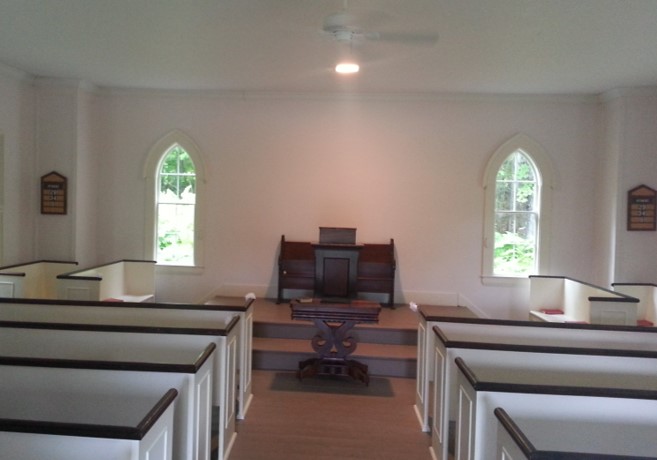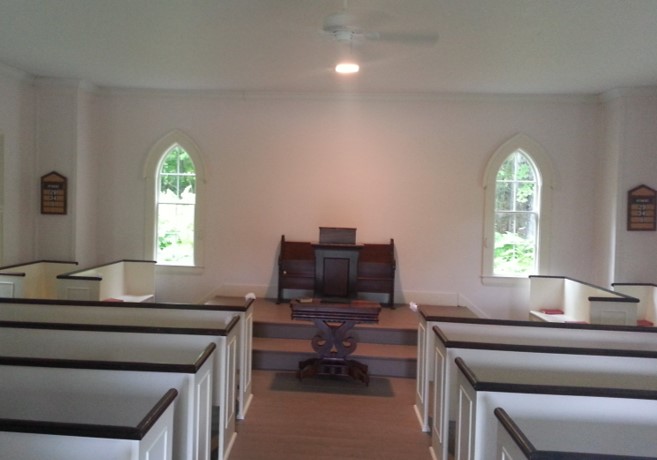Let’s assume you’ve been asked to be the Lay Reader (or a Worship Assistant who also reads from scripture) in church next Sunday. You’re going to be reading scripture aloud. That’s great. You may have done it before. But do you really know what you’re doing?

We all have a superficial understanding of what’s about to happen and what the reader needs to do. At the appointed time in the Order of Worship, the reader will rise and face the congregation, often from the pulpit or behind a lectern, with Bible at hand and bookmark at the ready. The reader may adjust a mic, clear their throat, offer a few words of welcome and context, and then read the passage aloud trying not to make any mistakes. The reader often closes their short passage with “The word of God for the people of God.” Or, “This is the word of the Lord.” Something indicating that what was just read is important and everyone should have been paying attention.
The reader then takes their seat or moves on to the next item in the Order of Worship. There. That’s what we’re doing!
Experienced professional actors develop a similar and somewhat jaded (and humorous) perspective on what it takes to be an actor. In order of importance: speak your lines loudly, remember your blocking and don’t bump into the furniture.
Even these most trivial accounts of what it takes to perform a role on stage or in a worship service can seem daunting to the inexperienced and often more than they think they can handle. It really can seem that simple: remember when and where you are supposed to go and then start reading. But we know that to be truly effective and successful, performance requires more than simply not bumping into the furniture.
If we ask ourselves what it is we are being called to do, you have to begin by answering the question: what it is I am really doing when I read aloud. The answer is simple. Doing it requires some skill and practice, but just understanding what it is you are doing can be enormously clarifying and confidence building for the reader. It also puts the trivial actions described above in perspective. They really are trivial and not things you need to worry deeply about.
So, what are we really doing?
You’re going to be “reading aloud.” Reading aloud has two obvious components:
- Reading
- Aloud
The aloud part is performance. The assumption is that the reader is reading aloud to others who have, or may have, an interest in listening to what’s being read. Reading aloud assumes we are reading to a willing audience. That involves aspects of performance. Not performing. Performance. More on this in future articles.
The reading part of reading aloud is what we will concentrate on here. Reading also has two core components:
- Reading the text
- Reading for sense
Preparing to read a text begins with a kind of technical analysis. It invites an objective deconstruction of the text and mindfulness of the nature and characteristics of the particular text you are going to read. It means pay attention to the language.
Is the reading mostly dialogue or exposition? Whose voices are these? Which word types are used most: names, nouns, verbs, adverbs or adjectives? Word choice is important. Are the words descriptive, technical or poetic?
You don’t have to be a trained literary critic to do this. Just be observant as you read. What words jump out at you? How do the words being used make you feel? Can the word be visualized?
The language was not chosen arbitrarily or randomly. It’s purposeful. It’s the medium and the key to unlocking the dynamics, experience and effect the text can have on the audience. This is reading the way you might read music: to understand the key signature, the chord progression, the musical notation of the text; all a necessary precursor to the making of beautiful and powerful music.
I like to do this first when I encounter a reading because I can be completely objective in my observations. I can say a word, listen to it, and let it affect me. Consider the words “dream”, “sacrifice”, “slaughter”, “love…” What imagery do they conjure in your mind? How does the word dream, sound like a dream?
Making sense of the reading
Then read for sense. Reading for sense is not reading for meaning. Sense is understanding…what’s going on here? Does that idea, word, phrase or action make sense in the context of the events described in this passage. Does what people are doing and saying and why they are doing and saying what they are saying and doing make sense? Making sense of something requires understanding what is going on, understanding the objectives of the persons in the narrative, bringing clarity, and digging into subtext: filling out the bigger picture. Unless the purpose is nonsense, only sensible readings allow the words as presented to paint common, vivid and detailed images in the minds of listeners.
When reading for sense it helps to put things in your own words. How would you say this? Then, read it again. How does the Bible say what you just said? Is it a deeper and richer way of saying the same thing?
This is how we begin to create an encounter with scripture and facilitate an encounter that includes an audience. This is how we can be a more effective catalyst for this encounter. This is how we begin to breathe life into a text in performance. It’s the simple preparation we can all do. It’s an act of devotion and service that all readers can provide.
Read the text. Read for sense. Then practice.
When asked what it is you are doing this Sunday, you can begin to say, with conviction and confidence, “I will be reading aloud.”

